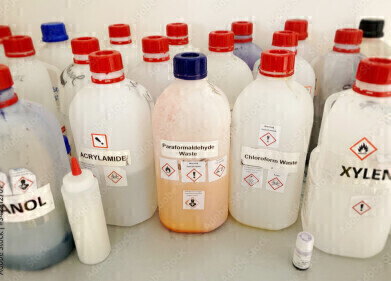Supercritical fluid (SFC), Green Chromatography
Chromatography Reveals the Cause of Woodpeckers' Changing Feathers
Nov 14 2016
It was a mystery that might have defeated even Holmes and Watson — why ‘yellow-shafted’ Northern Flickers sometimes have uncharacteristic red feathers. It isn’t just one or two flickers that have abnormally coloured feathers in any one season — but up to a third of the population.
But finally, the mystery might have been solved by researchers in the USA and Canada, thanks to chromatography and spectrophotometry — with not a deerstalker or pipe in sight. And surprisingly the answer seems to be diet, specifically the exotic berries of the honeysuckle.
Not 57 — only two varieties of flicker
The Northern Flicker is a type of woodpecker and it comes in two varieties. The birds from the west of their range have a pinkish-orange hue to the undersides of their wings — those to the east are yellow. Where they meet in the middle, the birds intermingle and breed together or hybridize — this produces birds with a blend of both yellow and red feathers.
But ornithologists have for years, spotted flickers far to the east of the hybrid zone with red-orange wing feathers. Many people assumed that the explanation must lie in genetics — the eastern bird’s unusual colours must come from breeding. But researchers — including Jocelyn Hudon PhD of the Royal Alberta Museum — had another, much simpler idea.
Pigments and berries
Dr Hudon and colleagues decided to check whether diet could play a role in the strange colours of the eastern flickers. They focused on two types of invasive — non-native — shrubs, Tartarian and Morrow’s honeysuckle. These plants were originally imported from Asia as to provide a better habitat for local wildlife. The team could show that it was a pigment — rhodoxanthin — produced in the berries of these honeysuckle species that was the cause of the red colouration in the feathers.
Using chromatography and spectroscopy they could isolate the pigment found in the feathers and show that it was rhodoxanthin and not a carotenoid pigment that gives the red colour to the feathers of the flickers found at the western end of their range. The separation of stereoisomers like rhodoxanthin is discussed in the article, Simple Method Development for the Separation of Chiral Synthetic Cannabinoids using Ultra High Performance Supercritical Fluid Chromatography.
Using data from a bird-banding station, the team could show that the birds acquired the rhodoxanthin in early August — which is when the honeysuckle is full of ripe juicy berries. The berries have also been implicated in other unusual bird colourations.
As Dr Hudon points out though, there could be some serious implications to the changing feather colours:
‘The ready availability of a pigment that can alter the coloration of birds with carotenoids in their plumages could have major implications for mate selection if plumage coloration no longer signalled a bird's body condition.’
Yet another example of man messing with nature and not foreseeing the consequences.
Digital Edition
Chromatography Today - Buyers' Guide 2022
October 2023
In This Edition Modern & Practical Applications - Accelerating ADC Development with Mass Spectrometry - Implementing High-Resolution Ion Mobility into Peptide Mapping Workflows Chromatogr...
View all digital editions
Events
Apr 28 2024 Montreal, Quebec, Canada
May 05 2024 Seville, Spain
May 15 2024 Birmingham, UK
May 19 2024 Brno, Czech Republic
May 21 2024 Lagos, Nigeria














